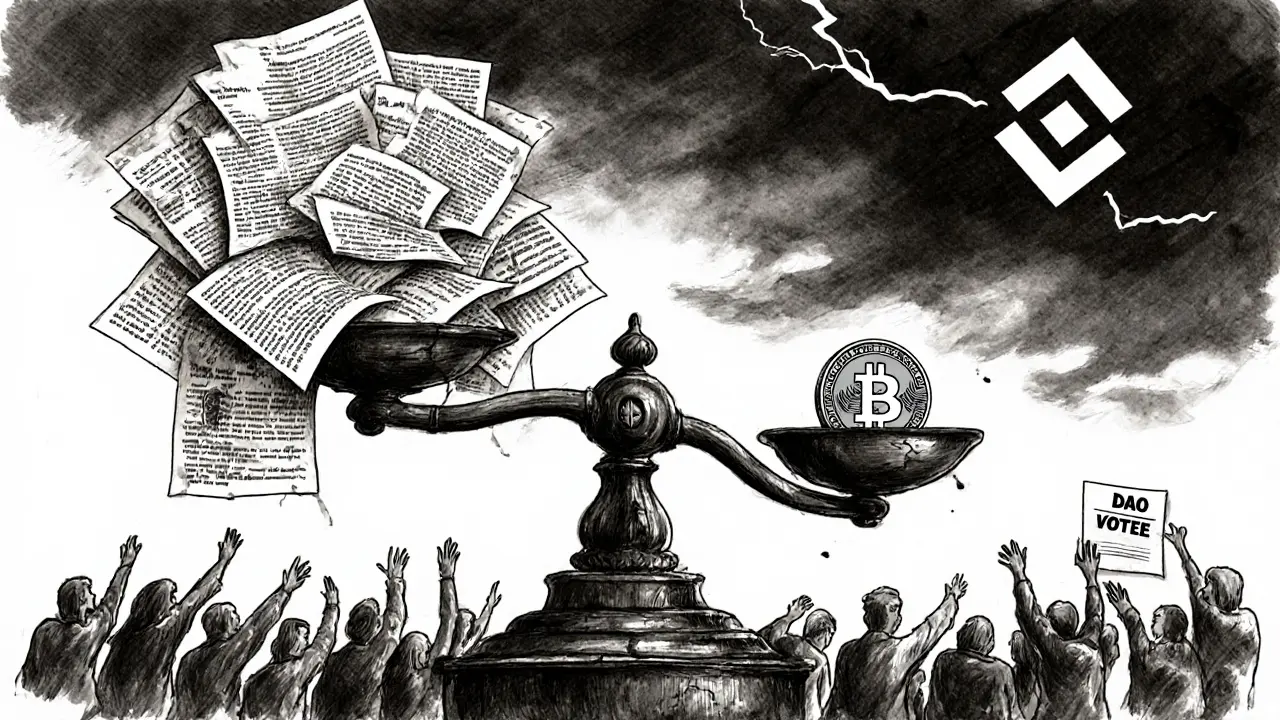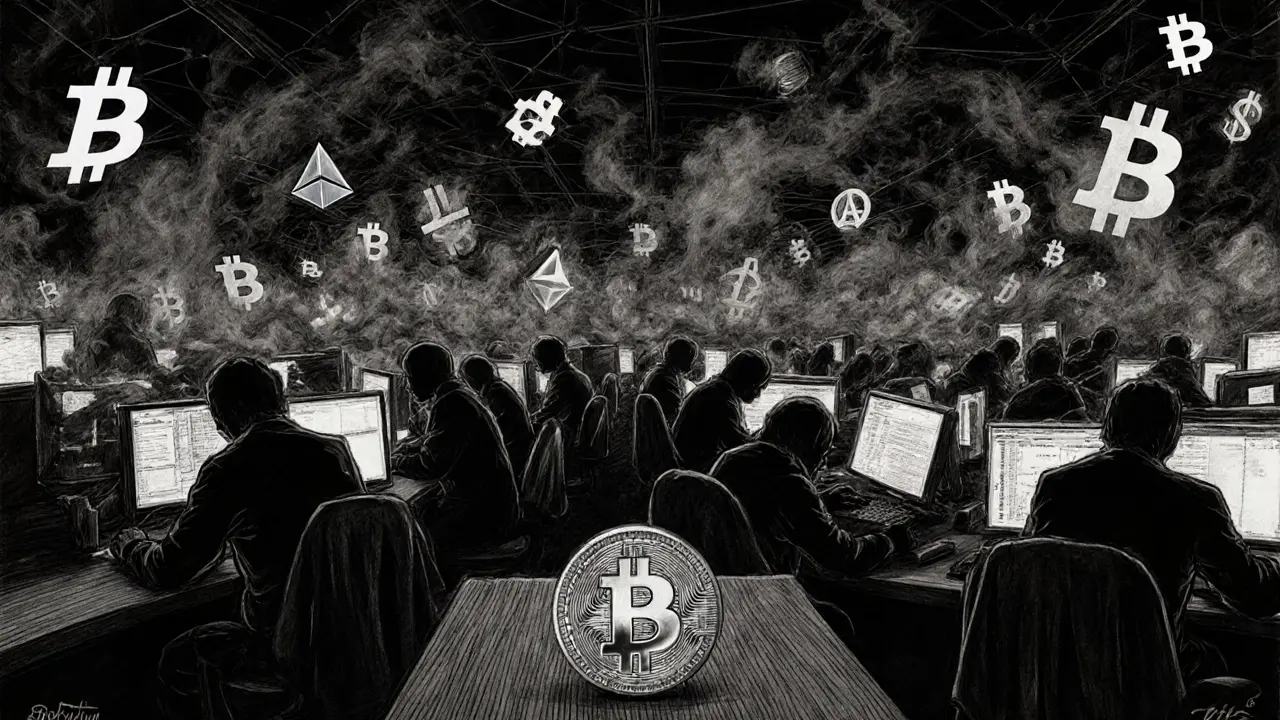Binance Trading Fee Calculator
Calculate how much you save when paying Binance fees with BNB. Binance charges 0.1% trading fee, but you get 25% discount when paying with Binance Coin (BNB).
Is Binance Still the Best Crypto Exchange in 2025?
If you’re looking to trade cryptocurrencies, you’ve probably heard of Binance. It’s not just another exchange - it’s the biggest one in the world. By 2025, Binance handles over $30 billion in daily trading volume and serves more than 168 million users. That’s more than the population of Japan. But size doesn’t always mean simplicity. So is Binance still worth it for you? Let’s break it down - no fluff, just facts.
What You Can Trade on Binance
Binance doesn’t just offer Bitcoin and Ethereum. It lists over 350 cryptocurrencies, including obscure altcoins you won’t find on Coinbase or Kraken. Need to trade Solana, Polygon, or a new token from a recent launchpad? Binance likely has it. You can do spot trading, futures, options, margin trading, and even swap one crypto for another without converting to stablecoins first.
For example, you can trade ETH for SOL directly. No need to sell ETH for USDT, then buy SOL. That saves time and reduces fees. If you’re into DeFi, Binance also offers staking for 22 different coins. Rewards are paid out weekly, and you can earn anywhere from 9.95% to 39.95% APR depending on the asset. But remember - higher yields usually mean higher risk.
Fees: Why Binance Beats Most Competitors
Trading fees on Binance are 0.1% per trade for spot markets. That’s lower than KuCoin (0.1%-0.2%) and way cheaper than Coinbase (0.5%+). But here’s the real trick: if you pay your fees in Binance Coin (BNB), you get a 25% discount. So instead of paying $10 in fees on a $10,000 trade, you pay just $7.50.
Withdrawal fees vary by coin. For Bitcoin, it’s usually 0.0005 BTC. For Ethereum, around 0.01 ETH. These aren’t the lowest in the industry, but they’re fair. Binance also has a P2P marketplace where you can buy crypto with bank transfers, PayPal, or even gift cards - no credit card fees, no middlemen.
Security: Strong, But Not Foolproof
Binance keeps 90%-95% of user funds in cold storage. That means offline wallets, untouched by hackers. They also have a Secure Asset Fund for Users (SAFU) - a reserve fund built from trading fees - to cover losses in case of a breach. After the $40 million hack in 2019, they made security a top priority.
Two-factor authentication (2FA) is mandatory. You can use Google Authenticator, SMS, or even a YubiKey hardware token. But here’s the catch: if someone steals your email password, they can still reset your 2FA and take over your account. Binance doesn’t have phone support, so if you’re locked out, you’re stuck waiting for email replies.
Security.org confirms Binance’s cold storage is reliable, but warns that most breaches happen because users reuse passwords or fall for phishing scams. Bottom line: Binance is secure - if you’re careful.

For Beginners: Too Much, Too Fast
Binance isn’t beginner-friendly. The interface is packed with options: futures, leverage, margin, staking, NFTs, launchpads, Visa cards, DeFi wallets. It’s overwhelming. A new user might accidentally open a 50x leveraged position and lose everything in minutes.
Many Reddit users (r/binance has 1.2 million members) say the platform feels like a “power tool for pros.” If you’re just buying Bitcoin to hold, Binance works. But you’re better off starting with a simpler app like Cash App or Robinhood. Once you understand candlestick charts, limit orders, and how leverage works, then come back to Binance.
They do have Binance Academy - a free learning hub with 200+ guides on trading, blockchain, and security. But most beginners skip it. Community forums like Binance Angels are faster for real-time help.
Regulatory Trouble: What You Need to Know
Binance isn’t legal everywhere. In the U.S., it shut down its main platform in 2021 and replaced it with Binance.US - a separate, heavily restricted version. Binance.US doesn’t offer futures, margin, or most altcoins. If you’re in the U.S., you’re not getting the full Binance experience.
In Europe, new rules under MiCA (Markets in Crypto-Assets) took effect in 2024. Now, you can only trade anonymously up to €1,000 per month. Above that, you need full KYC - ID, proof of address, tax ID. Binance complied, but it slowed down onboarding for millions.
The U.S. Department of Justice and IRS have been investigating Binance for tax evasion and money laundering since 2021. In 2023, they paid a $4.3 billion fine. That doesn’t mean the platform is unsafe - but it does mean regulators are watching closely. Your funds are still protected, but don’t expect Binance to stay the same forever.
Customer Support: Slow, But There
Binance doesn’t offer phone support. Ever. No live chat on weekends. No callback option. You submit a ticket through their help center, and you wait. Response time? Usually 24-48 hours. During market crashes, support queues get backed up for days.
Trustpilot reviews show 78% of users rate support as “good” or “excellent” - but that’s mostly for simple questions like “How do I withdraw?” When you have a frozen account or a delayed withdrawal, the replies get robotic. Reddit users report account freezes during volatility spikes. No warning. No explanation. Just “your account is under review.”
If you need fast help, your best bet is the Binance Angels community - volunteers who’ve been using the platform for years. They’re not official, but they’re faster than support.

Who Is Binance Really For?
Binance is perfect if:
- You trade frequently and want the lowest fees
- You want access to hundreds of altcoins and new token launches
- You’re comfortable with futures, leverage, and margin trading
- You use BNB to pay fees and want the 25% discount
Binance is NOT for you if:
- You’re new to crypto and just want to buy Bitcoin
- You need phone support or instant help
- You’re in the U.S. and want full access to all features
- You hate complex interfaces and prefer simplicity
The Bottom Line: Still the King, But With Caveats
In 2025, Binance remains the most powerful crypto exchange on the planet. Its volume, liquidity, and feature set are unmatched. You’ll pay less to trade, access more coins, and earn better yields on staking than anywhere else.
But it’s not a casual platform. It’s a professional tool with hidden risks. One wrong click on a futures trade can wipe out your account. Regulatory pressure is real. Support is slow. And the interface? It’s a maze.
If you’re serious about trading and willing to learn, Binance is still the best choice. If you’re just starting out or want something simple - look elsewhere. Don’t let its size fool you. Binance doesn’t care if you win or lose. It just wants you to trade.
Recent Updates in 2025
Binance rolled out "Megadrop" in May 2025 - a system that lets users earn early access to new tokens by holding BNB or staking assets. It’s like an airdrop, but you have to earn your spot.
They also launched AI-powered trading bots. These bots analyze market trends and execute trades automatically. You can set risk limits, but they’re not foolproof. Some users report losses during sudden market swings.
The long-term plan? Transition to a DAO (Decentralized Autonomous Organization) by 2026. That means users might vote on platform changes - fees, listings, rules. It’s ambitious. But if it happens, Binance could become the first truly community-owned exchange.
How to Get Started
- Go to binance.com (not .us unless you’re in America)
- Sign up with your email and create a strong password
- Enable 2FA using Google Authenticator (not SMS)
- Complete KYC - upload your ID and a selfie
- Deposit crypto or buy via P2P
- Start with spot trading. Avoid leverage until you understand it
- Use BNB to pay fees and save 25%
Don’t rush. Spend a week reading Binance Academy’s basics. Watch YouTube tutorials on limit orders and stop-losses. Practice on a small amount. Binance doesn’t hold your hand - but if you learn, it can make you money.

